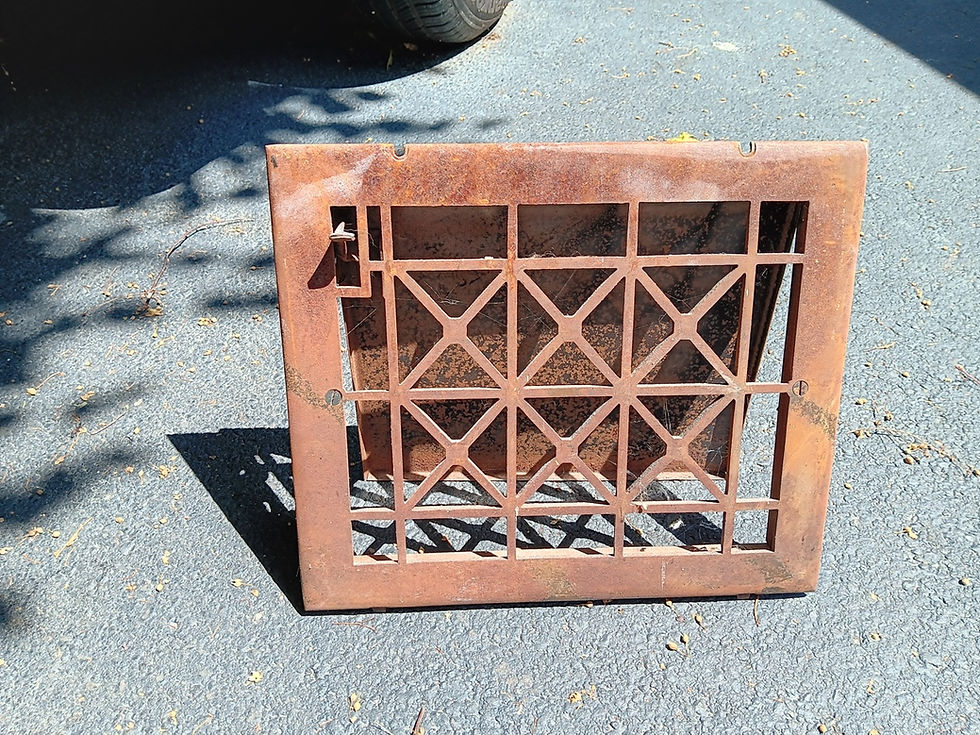Ideas from Ed: New bib! (Volume 8, Issue 7)
- edwardpetrus

- Jul 31
- 4 min read
I always called the connection on the side of our house to which a hose can be connected an “outside faucet.” I think the correct nomenclature is “hose bib.” Many years ago, I installed a hose bib onto a wooden board and attached a short section of washing machine hose between the real bib on the house and my bib on the board. I hammered the board into the ground at a more convenient location a few feet from the house. My wife no longer needed to reach through her flowers to find the water connection. It was also much easier at the new spot to get a watering can below the spout.
That system actually worked very well, but the board finally rotted away, and I grew tired of replacing the rubber washer to keep the valve from leaking. The work I’m showcasing in this month’s article can easily be done by any handyman in an afternoon. My plan was simply to update the existing system with better components.
Here are pictures of the old installation. The board is barely stable enough to hold itself in place, and of course, I have the water turned off so that I can begin disassembly.


I removed the braided hose from the backside of my makeshift bib, but wasn’t sure if any of the old parts were reusable. The old bib had a female threaded connection into which I had inserted a male thread to sweat (solder) adapter. Then there was a short piece of copper pipe, followed by a sweated-on pipe to male hose thread adapter. I removed the bib itself from the board (there were two stainless steel screws holding it) and then lifted the board from the ground.


While it may have been possible to reuse the old section of copper pipe/hose adapter, I thought it best to use new. I also wanted to use a bib with a ball valve instead of one that needed a washer to seal the flow. This is what I purchased, after looking through what was available at three of my nearby big-box and hardware stores. Made by Sharkbite, it has a slip-in connection at the rear and is ¼-turn from full on to full off. Remember, I do not endorse any particular brand of merchandise – I only show you what I used in my particular situation.


None of my local stores carried the same hose adapter that I used before, so I decided to “build one up” using two pieces instead of one. The first was a copper sweat to female pipe thread adapter, and the second was a male pipe thread to male hose thread adapter which would screw into the first one. (Note that pipe thread is not the same as hose thread!) I sweated adapter number one onto a stub of copper pipe I had on hand. The pipe looked pretty ugly but is solid, and the end cleaned up nicely with steel wool. Having clean copper is critical to getting a good sweated fitting. I used Teflon tape on adapter number two, making sure to wrap it in the proper direction (clockwise when viewed from the end of the threads.) I used six wraps of the tape.


I thought that the post/board needed to be beefier than the previous one, plus better able to fight off rot and decay. I used a scrap section of 2x4 left over from a prior project. It has a high level of chemical content and is rated for ground contact like this.

I didn’t see the need to get super fancy with things, but I cut the top of the post in an arch on my bandsaw to match the shape of the bib, and to keep rainwater from pooling on top of the post. Then I cut the bottom into a wedge to allow me to drive it into the ground. A through-hole drilled at the bib location for the pipe and two guide holes for the attaching screws finished the post.

I attached the bib to the post with stainless steel screws, cut the pipe/adapters combination to an appropriate length, and then quick-connected it all together via the push-fit fitting.


I drove it into the ground, making sure it was plumb for appearance sake. I then screwed on the hose connecting this apparatus to the real hose bib on the house, and turned the water on to make the new bib functional. I should note that I live in western Pennsylvania and before winter hits, I shut the water off inside the house and drain everything outside to prevent damage from freezing.


Depending on the situation, the post could be painted, stained, decorated, or made in a unique shape to enhance its appeal. This was a quick and easy project, and I’ll replicate it on the other hose bib on a different side of my house.
I hope all your projects go well. Thanks for reading, and happy restoring!
Ed
If you’d like to download a PDF of this “Ideas” column, click here:




Hose bib is the correct name. I have two hose bibs in inconvenient locations - I might make two.